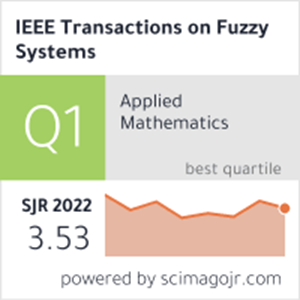Graph Classification Method Based on Fuzzy Entropy Causality in a Network Formal Context
IF 11.9
1区 计算机科学
Q1 COMPUTER SCIENCE, ARTIFICIAL INTELLIGENCE
引用次数: 0
Abstract
Graph classification has always been a research hotspot in the field of graph neural networks and related areas. However, due to the complexity of graph data, finding a feasible algorithm that balance efficiency and accuracy remains a challenge. In this article, a graph classification method based on fuzzy entropy causality is introduced by combining formal concept analysis, causality, and graph convolution. First, the network formal context is combined with graph convolutional neural networks (GCNs), forming “graph network formal context,” providing a solid foundation for the convergence of these two theoretical domains. In addition, a high-order GCN is thoroughly studied, leading to the design of high-order cluster information aggregation algorithm and high-order aggregation hierarchical graph pooling algorithm (HAGP). These innovations comprehensively capture fundamental information in graphs. Simultaneously, combining fuzzy entropy with Pearl's causality, creating a fuzzy entropy causality classification method (FECCM). Finally, to validate the effectiveness of the proposed model, classification performance comparison experiments are conducted using 12 graph datasets and nine University of CaliforniaIrvine Machine Learning Repository (UCI) classification datasets, demonstrating the advanced nature of the HAGP-FECCM.网络形式背景下基于模糊熵因果关系的图分类方法
图分类一直是图神经网络及相关领域的研究热点。然而,由于图数据的复杂性,寻找一种兼顾效率和准确性的可行算法仍然是一个挑战。本文结合形式概念分析、因果关系和图卷积,介绍了一种基于模糊熵因果关系的图分类方法。首先,将网络形式语境与图卷积神经网络(GCN)相结合,形成 "图网络形式语境",为这两个理论领域的融合提供了坚实的基础。此外,还对高阶 GCN 进行了深入研究,从而设计出高阶聚类信息聚合算法和高阶聚合分层图池算法(HAGP)。这些创新全面捕捉了图中的基本信息。同时,将模糊熵与珀尔因果关系相结合,创建了模糊熵因果关系分类方法(FECCM)。最后,为了验证所提模型的有效性,使用 12 个图数据集和 9 个加州大学尔湾分校机器学习库(UCI)分类数据集进行了分类性能对比实验,证明了 HAGP-FECCM 的先进性。
本文章由计算机程序翻译,如有差异,请以英文原文为准。
求助全文
约1分钟内获得全文
求助全文
来源期刊

IEEE Transactions on Fuzzy Systems
工程技术-工程:电子与电气
CiteScore
20.50
自引率
13.40%
发文量
517
审稿时长
3.0 months
期刊介绍:
The IEEE Transactions on Fuzzy Systems is a scholarly journal that focuses on the theory, design, and application of fuzzy systems. It aims to publish high-quality technical papers that contribute significant technical knowledge and exploratory developments in the field of fuzzy systems. The journal particularly emphasizes engineering systems and scientific applications. In addition to research articles, the Transactions also includes a letters section featuring current information, comments, and rebuttals related to published papers.
 求助内容:
求助内容: 应助结果提醒方式:
应助结果提醒方式:


